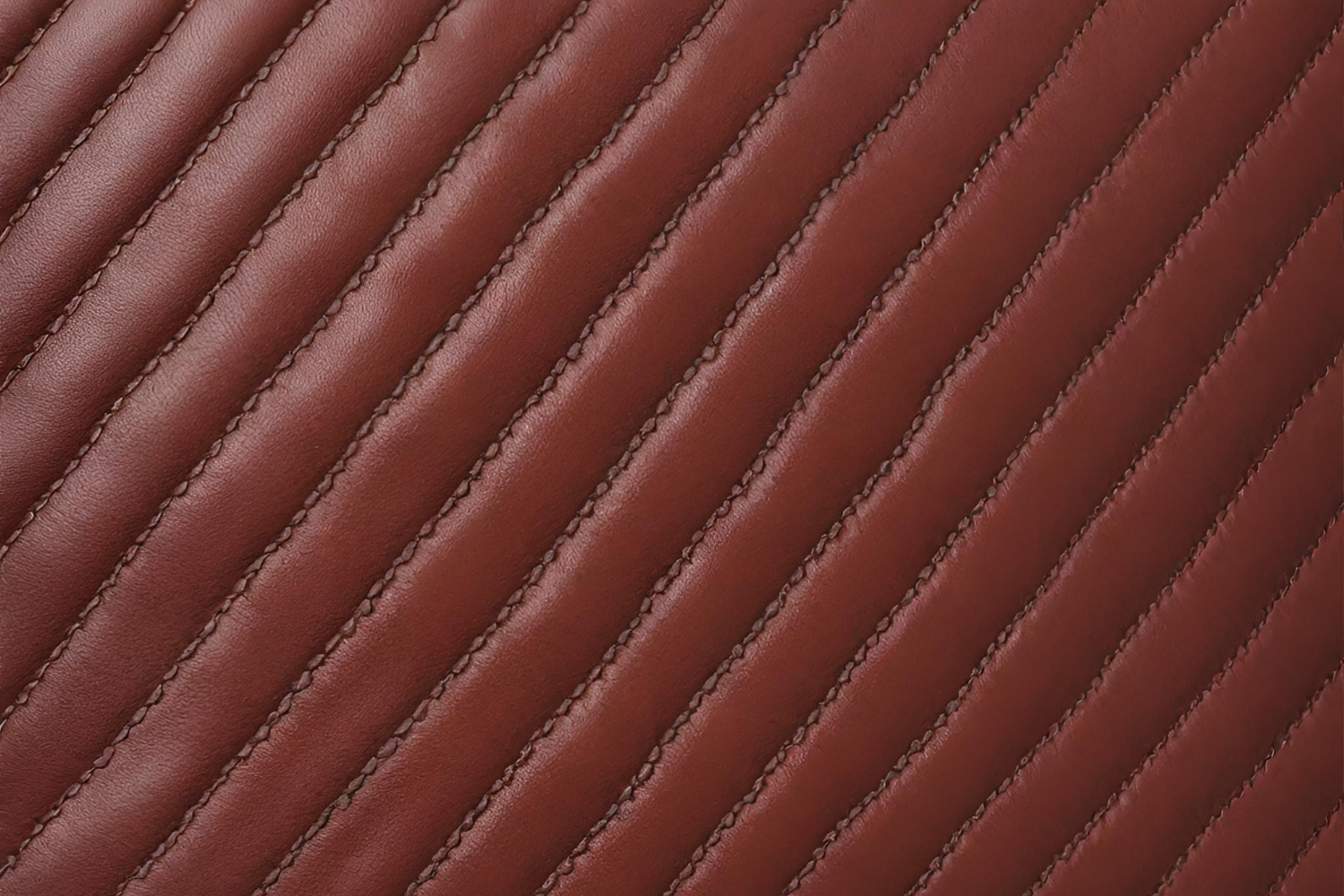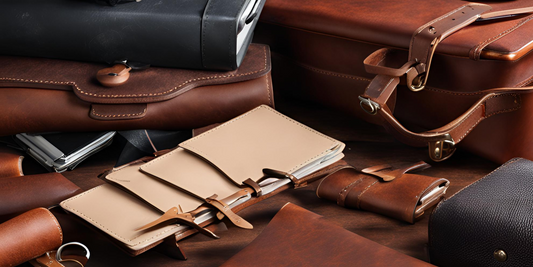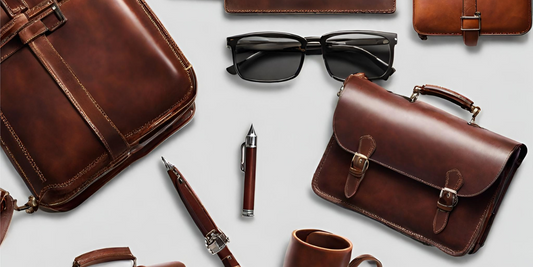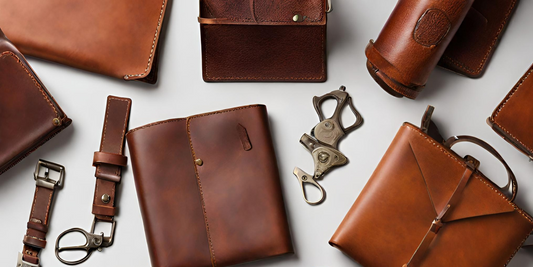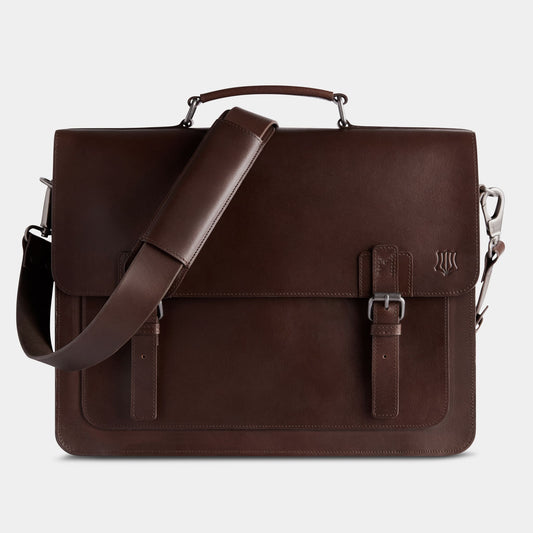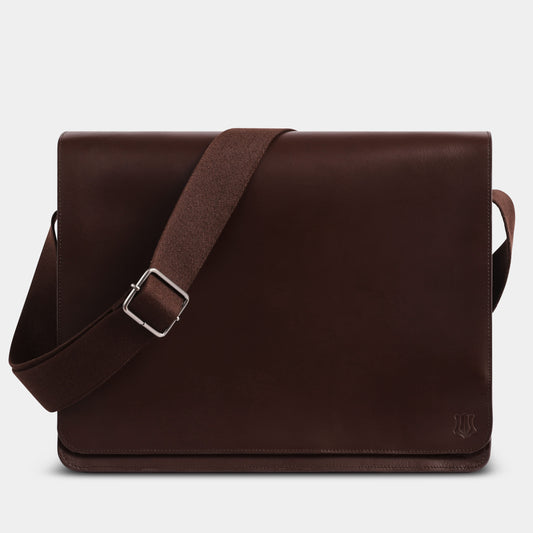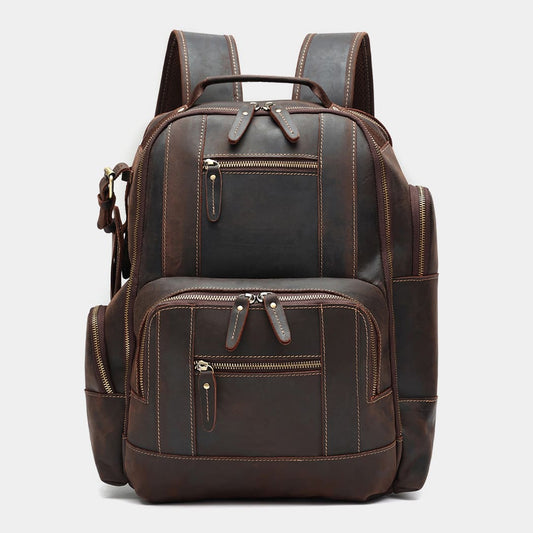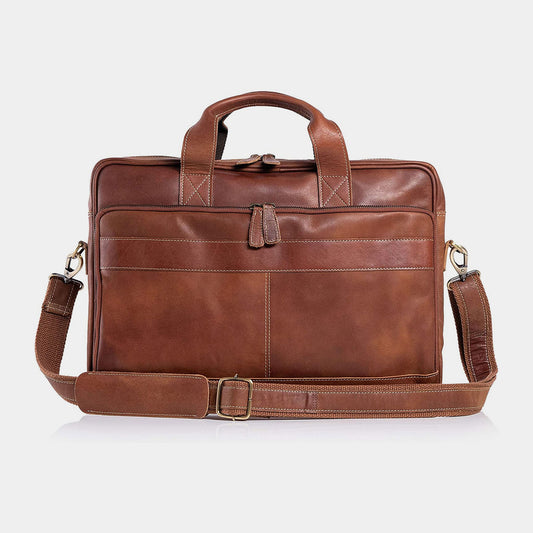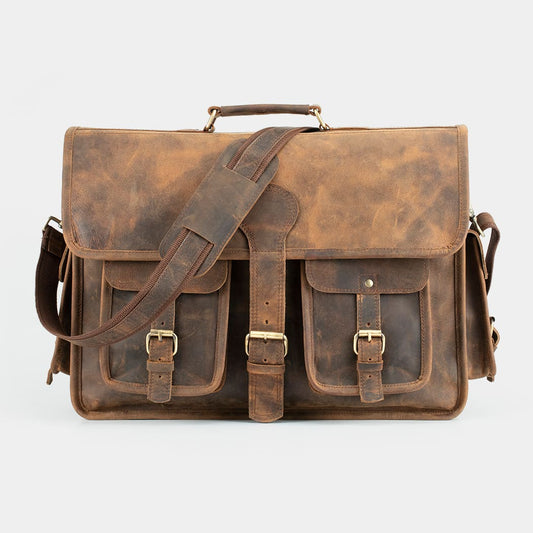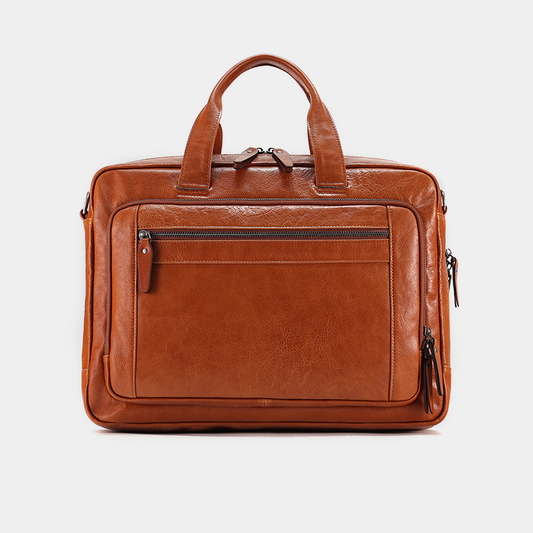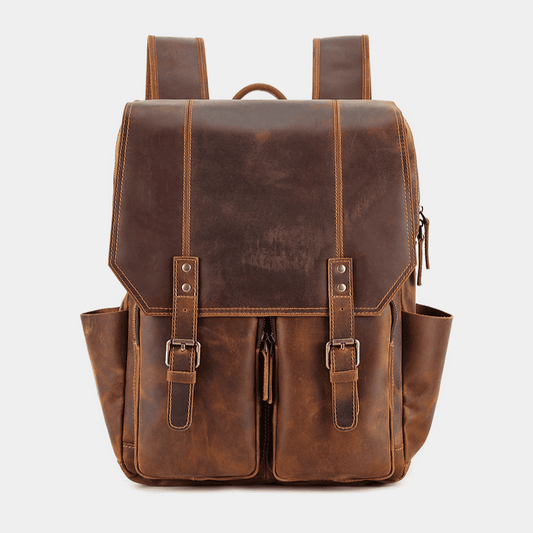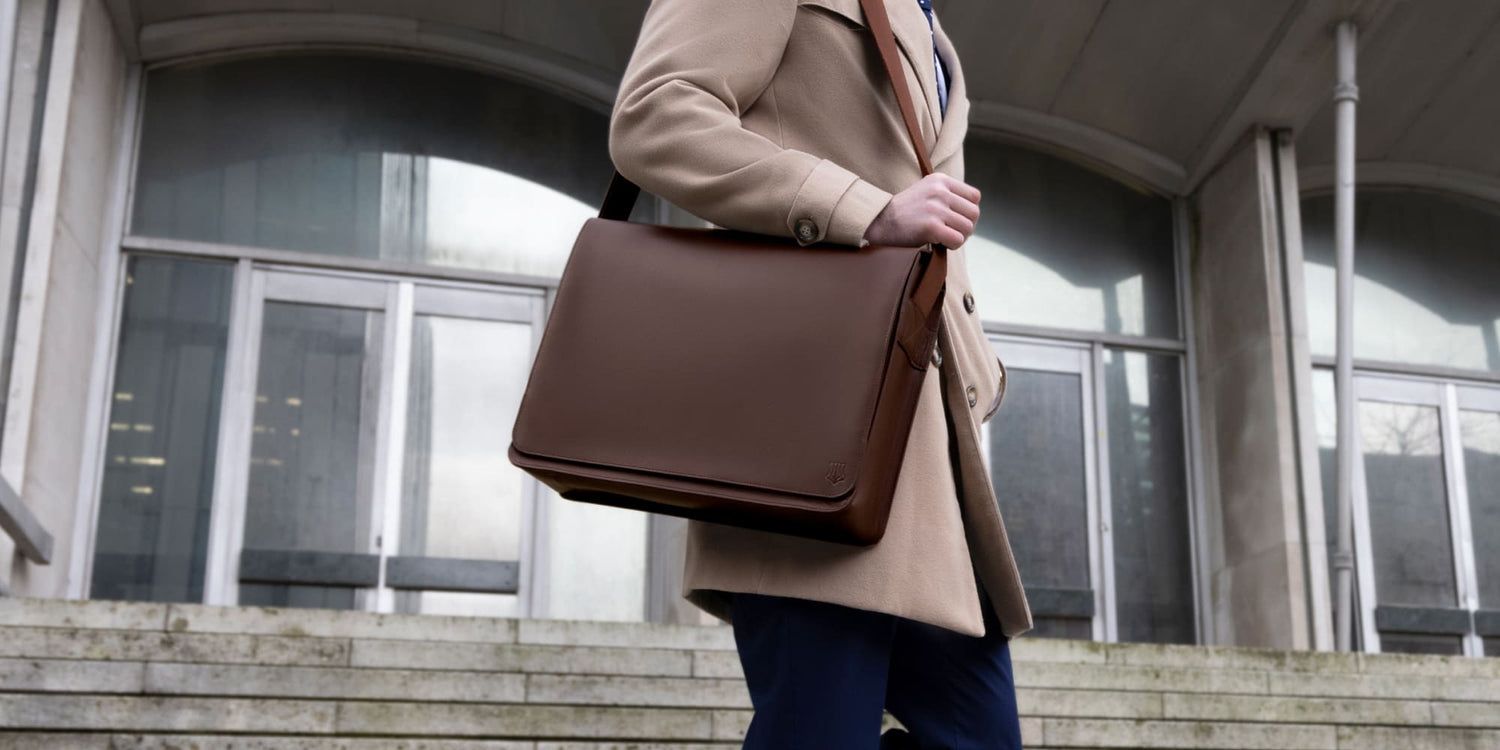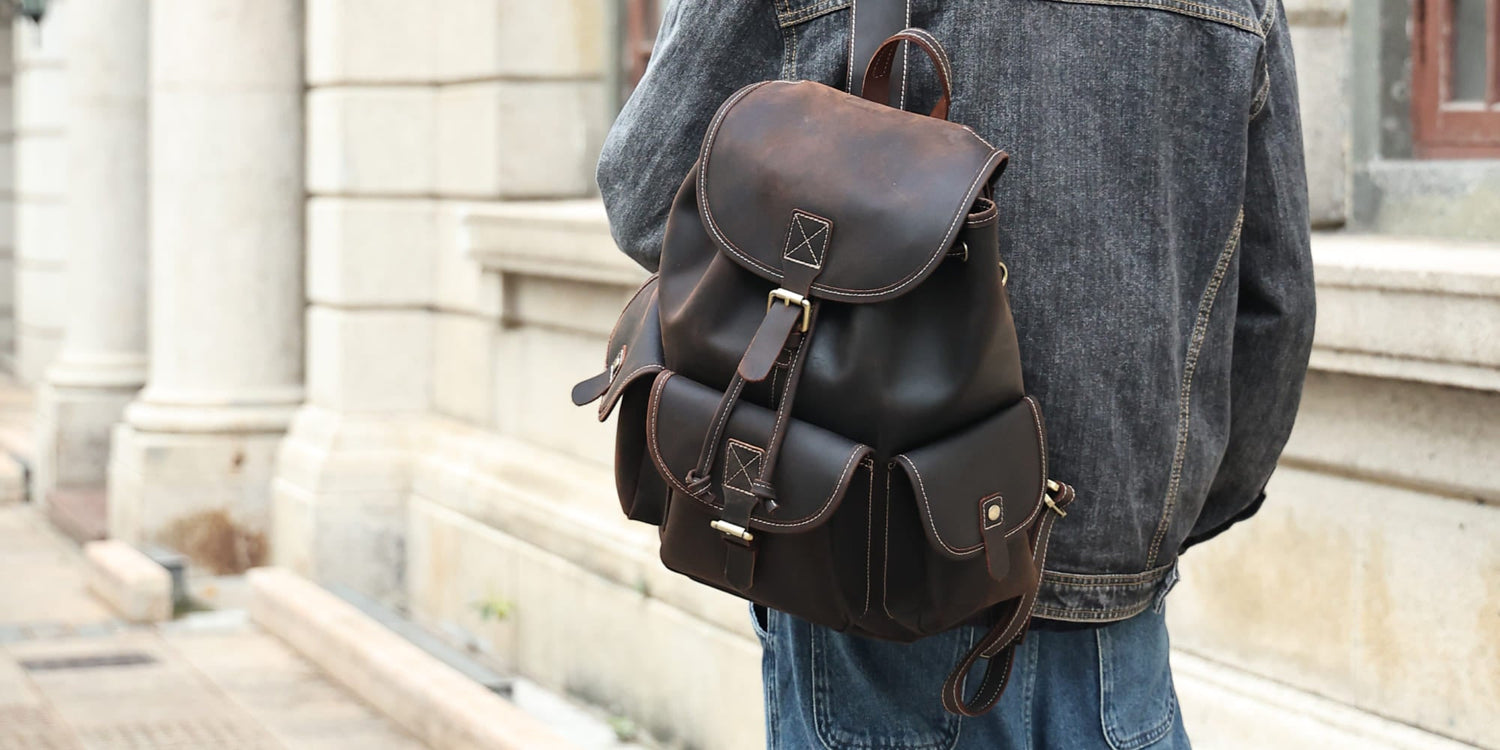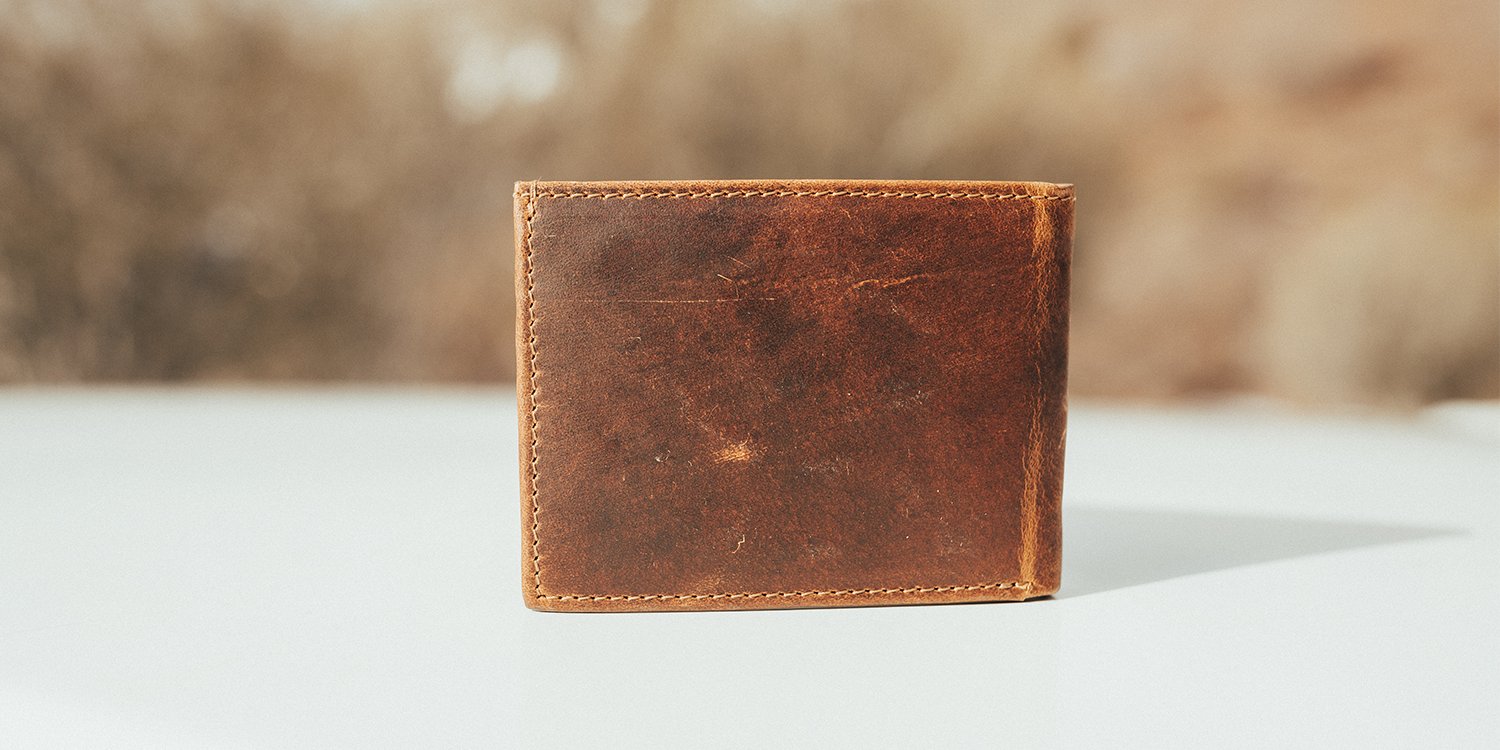Ever felt overwhelmed by the sheer variety of options in the leather industry, especially when it comes to synthetic leather?
It's like being lost in a maze of choices, with questions swirling around quality, production methods, and sustainability.
Fear not! Our definitive guide is here to be your compass in this bewildering landscape.
We're lifting the veil on synthetic leather, giving you the lowdown on how it's made, where it's used, and its impact on the planet.
Armed with this knowledge, you'll stride through the leather market with confidence and clarity.
What is Synthetic Leather?
Synthetic leather, also known as faux leather or vegan leather, is a man-made material designed to mimic the look and feel of real leather.
It is typically composed of plastic-based materials such as polyurethane (PU) or polyvinyl chloride (PVC).
Synthetic leather offers a cruelty-free alternative to traditional leather products, but does have its own sustainability concerns.
Synthetic leather is a product of precise science and creative innovation. Originating in laboratories rather than pastures, its production process blends raw materials into a versatile alternative to genuine leather.

Synthetic Leather vs Real Leather
When it comes to choosing between synthetic and real leather, there are several factors to consider, but we always favor real leather for its unparalleled durability and timeless appeal.
Durability
Real leather stands out for its exceptional durability, often lasting for decades with proper care.
It develops a rich patina over time, enhancing its beauty and character.
In contrast, artificial leather may not withstand the test of time as well as real leather, showing signs of wear and tear more quickly.
Natural Beauty
Real leather boasts a natural beauty and texture that is difficult to replicate.
Each piece of genuine leather has unique characteristics, such as grain patterns and markings, adding to its allure.
Fake leather, while capable of mimicking the appearance of real leather, often lacks the depth and richness of its genuine counterpart.
Longevity
Thanks to its durability and timeless appeal, real leather products can become cherished heirlooms passed down through generations.
Synthetic leather, on the other hand, may not have the same longevity, requiring more frequent replacement due to wear and tear.
Environmental Impact
While real leather has traditionally been associated with environmental concerns, modern leather production methods have become more sustainable, utilizing by-products from the meat industry and minimizing waste.
In comparison, synthetic leather production still relies on petrochemicals and energy-intensive processes, contributing to pollution and greenhouse gas emissions.
Leather alternatives are often found in vegan leathers. Examples of these are cork leather and mushroom leather that are made from 100% sustainable items. Note that these items will be less durable.
Comfort and Breathability
Leather made from real animal skin offers superior comfort and breathability, conforming to the body over time and allowing air to circulate.
This makes it an ideal choice for items like shoes and upholstery.
Synthetic leather, while often more affordable, may lack the same level of comfort and breathability, leading to discomfort, especially in warm weather.
The Choice is Clear
While synthetic leather may offer affordability and versatility, it cannot match the durability, natural beauty, and longevity of real leather.
At The Real Leather Company, we believe in providing our customers with briefcases, messengers, duffles and wallets that stand the test of time, offering unparalleled quality and craftsmanship that can be enjoyed for years to come.

How is Synthetic Leather Made?
Synthetic leather is crafted using a blend of science and ingenuity.
Unlike genuine leather, it doesn't come from animals but is created in laboratories. Here's a peek into the fascinating process:
1. Mixing the Ingredients
To replicate the qualities of real leather, scientists combine various substances such as polymers, chemicals, and additives.
These are carefully mixed together until they form a consistent blend.
2. Forming the Base
Once the mixture is ready, it's spread onto a backing material, forming a thin layer.
This layer serves as the foundation for the synthetic leather and provides the canvas for further processing.
3. Adding Texture and Finish
Next comes the creative part.
Different techniques like embossing and printing are used to give the synthetic leather its texture and pattern.
This step is crucial for mimicking the natural look of genuine leather.
4. Enhancing Durability
To ensure the synthetic leather can withstand wear and tear, protective coatings are applied.
These coatings not only provide durability but also add a glossy or matte finish, depending on the desired look.
5. Innovations for Sustainability
With the rising demand for eco-friendly products, researchers are constantly exploring new ways to make synthetic leather more sustainable.
This includes using recycled materials and developing manufacturing processes with minimal environmental impact.
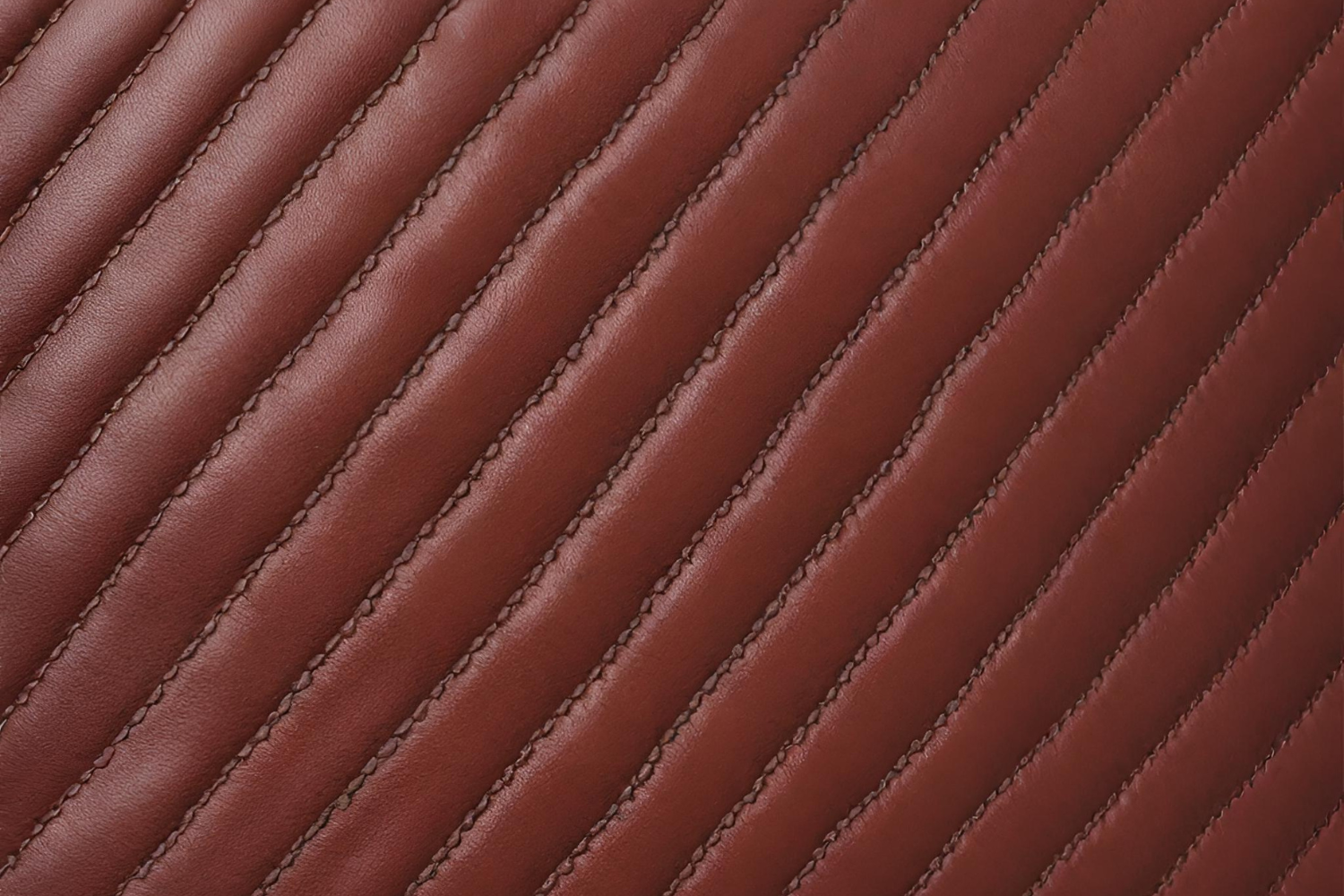
Types of Synthetic Leather
Synthetic leather offers a diverse array of options, each tailored to specific needs and preferences.
Let's explore the lesser-known varieties that provide unique characteristics and applications, enriching the world of leather goods.
Here are the most popular types of faux leather:
PU Leather
PU leather stands as a prominent player in the synthetic leather market.
Crafted by coating a fabric base with polyurethane, it delivers a soft, leather-like feel.
This versatile material boasts an extensive range of colors and textures, making it a favorite for fashion items like jackets, handbags, and shoes.
Its affordability and ease of maintenance further enhance its appeal to consumers seeking style and convenience.
PVC Leather
PVC leather, also known as vinyl leather, offers durability and resilience.
Formed by coating a fabric base with polyvinyl chloride, it boasts waterproof properties and effortless cleanability.
These qualities make it a preferred choice for various applications, including upholstery, automotive interiors, and outdoor gear.
While PVC leather may lack the natural feel of genuine leather, its practicality and affordability make it a practical alternative for budget-conscious consumers.
Microfiber Leather
Microfiber leather combines the softness of suede with the durability of synthetic materials.
Woven from microfiber materials and coated with polyurethane, it offers a luxurious texture and excellent breathability.
These qualities make it a preferred choice for upholstery, footwear, and accessories, providing comfort and style without compromising on performance.
Bio-based Leather
Bio-based leather represents a sustainable alternative crafted from renewable resources.
Derived from plant-based materials or agricultural by-products, it offers similar qualities to traditional synthetic leather with a lower environmental impact.
This eco-friendly option appeals to conscientious consumers seeking to minimize their ecological footprint while enjoying the benefits of synthetic leather.
Recycled Leather
Recycled leather breathes new life into discarded materials, transforming leather scraps and fibers into innovative products.
By processing and bonding these remnants using adhesives, manufacturers create a unique patchwork-like appearance.
Recycled leather not only reduces waste but also offers a distinctive aesthetic in items such as bags, accessories, and upholstery.
Silicone Leather
Silicone leather stands out for its exceptional durability and resilience.
Crafted from silicone polymers, it boasts waterproof properties and high resistance to stains and scratches.
These qualities make it suitable for demanding applications in industrial settings, outdoor gear, and specialized products where durability is paramount.

Pros and Cons of Synthetic Leather
Synthetic leather offers a host of benefits and drawbacks, each worth considering before making a purchase. Let's delve into the advantages and disadvantages of this alternative material to gain a comprehensive understanding.
Pros
Synthetic leather presents several advantages that appeal to consumers seeking affordability, durability, and sustainability.
1. Affordability
One of the primary advantages of synthetic leather is its affordability compared to genuine leather. This makes it an attractive option for budget-conscious consumers who still desire the look and feel of leather products.
2. Variety
Synthetic leather comes in a wide range of colors, textures, and finishes, offering consumers ample choices to suit their preferences and style. Whether you prefer a sleek, modern look or a rustic, aged appearance, there's a synthetic leather option to match your taste.
3. Sustainability
Many synthetic leather manufacturers prioritize sustainability by using eco-friendly materials and production methods. This commitment to sustainability appeals to environmentally conscious consumers who wish to minimize their environmental impact without sacrificing style or quality.
4. Versatility
Synthetic leather is highly versatile and can be used in various applications, including fashion, upholstery, automotive interiors, and accessories. Its versatility makes it a popular choice for a wide range of products, from handbags and shoes to furniture and car seats.
Cons
Despite its many advantages, synthetic leather also has its drawbacks that consumers should be aware of before making a purchase.
1. Lack of Breathability
Synthetic leather tends to be less breathable than genuine leather, which can result in discomfort, especially in warm weather. This lack of breathability may cause sweating and discomfort, particularly in items like bags, shoes and jackets.
2. Less Natural Feel
While synthetic leather can closely mimic the look of genuine leather, it often lacks the natural feel and texture of real leather. Some consumers may prefer the tactile experience of genuine leather and find synthetic alternatives less satisfying.
3. Environmental Impact
Although many synthetic leather manufacturers prioritize sustainability, the production of synthetic materials still has environmental consequences. The use of petrochemicals and energy-intensive processes contributes to pollution and greenhouse gas emissions, albeit to a lesser extent than traditional leather production.
4. Limited Longevity
While synthetic leather is durable, it may not last as long as genuine leather. Over time, synthetic leather products may show signs of wear and tear, such as cracking or peeling, especially with heavy use or exposure to harsh conditions.
5. Limited Biodegradability
Unlike genuine leather, which is biodegradable, synthetic leather may take a long time to break down in landfills due to its synthetic composition. This limited biodegradability contributes to environmental concerns and waste management challenges.

The History of Synthetic Leather
Synthetic leather, also known as faux leather or vegan leather, traces its roots back to Europe in the early 20th century.
As demand for leather goods surged, researchers began exploring alternatives to natural leather to meet the growing needs of various industries.
The first attempts at creating synthetic leather were in Germany. These involved coating fabric with various compounds to mimic the texture and appearance of genuine leather.
These early versions were often crude and lacked the durability and aesthetic appeal of real leather.
It wasn't until the mid-20th century that significant breakthroughs were made in synthetic leather production.
Advances in polymer chemistry led to the development of more sophisticated materials, such as polyurethane (PU) and polyvinyl chloride (PVC), which offered improved durability and versatility.
By the latter half of the 20th century, synthetic leather had become a commercially viable alternative to genuine leather.
It found applications in various countries such as Italy, the UK and US. Industries like fashion, automotive, and upholstery found use for it, where its affordability and versatility appealed to manufacturers and consumers alike.

Common Uses of Faux Leather
Synthetic leather finds its place in various applications, offering affordability and versatility to consumers seeking leather-like products without the cost or ethical concerns associated with genuine leather.
1. Fashion Accessories
One of the most common uses of synthetic leather is in fashion accessories such as handbags, wallets, and belts. Its ability to mimic the look and feel of genuine leather at a fraction of the cost makes it a popular choice for fashion-conscious consumers on a budget.
2. Footwear
Synthetic leather is widely used in the footwear industry, providing an alternative to genuine leather shoes and boots. Its durability, water resistance, and affordability make it suitable for a wide range of footwear styles, from casual sneakers to formal dress shoes.
3. Upholstery
In the furniture upholstery industry, synthetic leather serves as a cost-effective alternative to genuine leather upholstery. It is commonly used in sofas, chairs, and automotive interiors, offering durability and easy maintenance while mimicking the luxurious look of real leather.
4. Automotive Interiors
Synthetic leather is also used extensively in automotive interiors, where it is employed for seat covers, door panels, and steering wheel covers. Its resistance to stains and easy cleanability make it a practical choice for car manufacturers looking to enhance the interior aesthetics of their vehicles.
5. Electronic Device Cases
Synthetic leather is often used in the production of electronic device cases such as smartphone covers, tablet sleeves, and laptop bags. Its ability to provide protection from scratches and impact while offering a stylish appearance makes it a popular choice for tech-savvy consumers.
6. Medical and Safety Equipment
In the medical and safety equipment industries, synthetic leather is utilized for items such as gloves, aprons, and protective gear. Its durability, flexibility, and resistance to chemicals make it suitable for applications where hygiene and safety are paramount.
7. Sporting Goods
Synthetic leather is commonly used in the production of sporting goods such as footballs, baseball gloves, and boxing gloves. Its ability to withstand wear and tear, as well as its water resistance, make it an ideal choice for outdoor and high-impact sports.
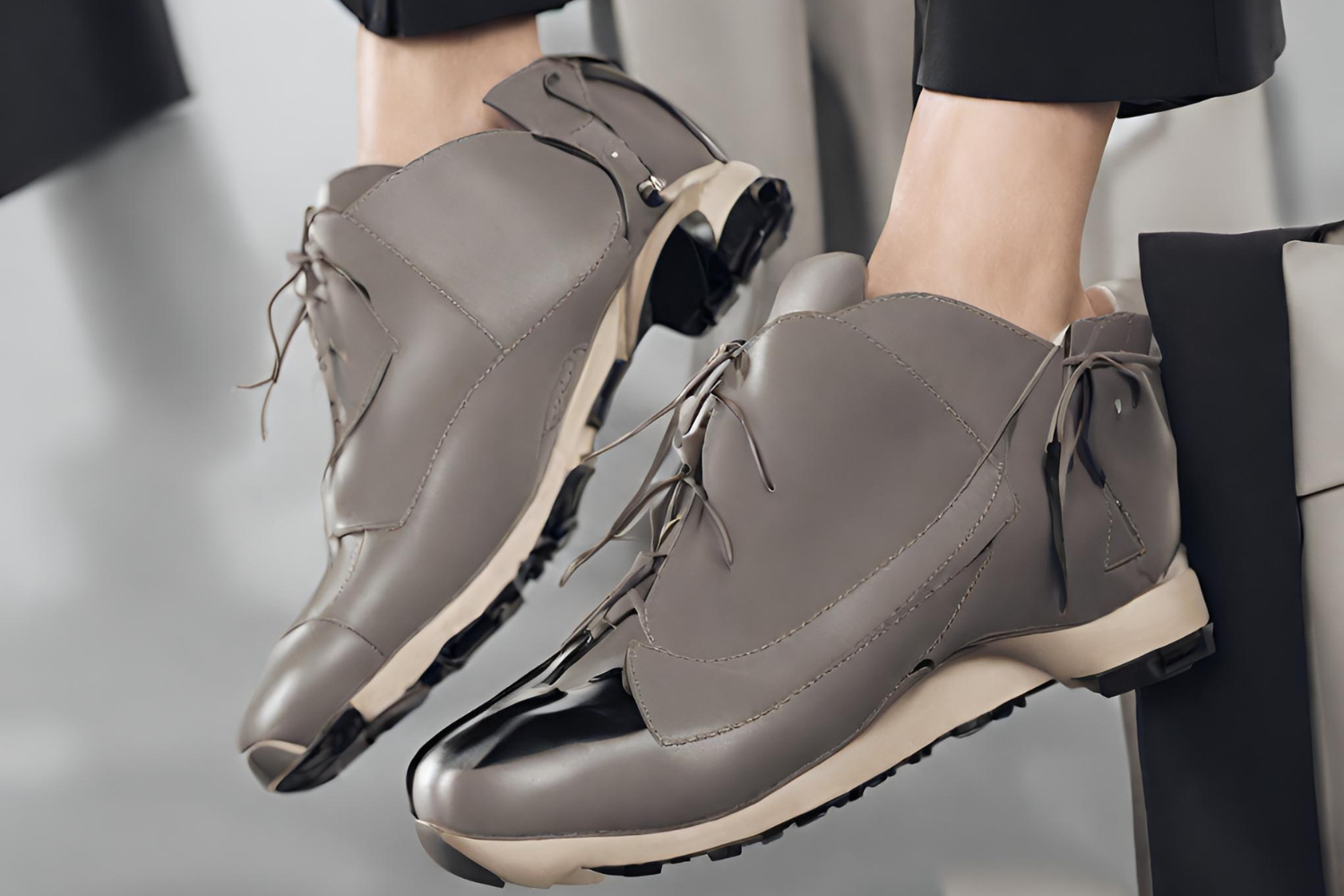
Sustainability of Synthetic Leather
Synthetic leather presents itself as a sustainable alternative to genuine leather, offering environmental benefits that appeal to eco-conscious consumers.
Advantages of Synthetic Leather
Reduced Environmental Impact
Synthetic leather production relies on synthetic materials derived from petrochemicals, reducing the environmental footprint associated with livestock rearing and land use.
Efficient Resource Utilization
Many synthetic leather products utilize recycled materials and by-products from other industries, minimizing waste and resource consumption.
Potential for Recycling
Synthetic leather products are often recyclable, offering the potential for closed-loop recycling and waste reduction.
Innovation in Production Methods
Advances in manufacturing technologies have led to the development of more sustainable synthetic leather options, including bio-based alternatives and eco-friendly production processes.
Real Leather's Sustainability
On the other hand, real leather is a sustainable choice with several inherent advantages:
Biodegradability
Genuine leather is biodegradable, breaking down naturally over time and reducing waste in landfills.
Longevity
Real leather products are durable and long-lasting, reducing the need for frequent replacement and minimizing resource consumption.
Renewable Resource
Leather is derived from the by-products of the meat industry, making it a renewable resource that contributes to the efficient utilization of animal resources.
Natural Beauty
Unlike synthetic materials, genuine leather boasts a natural beauty and texture that only improves with age, reducing the need for artificial enhancements and chemical treatments.
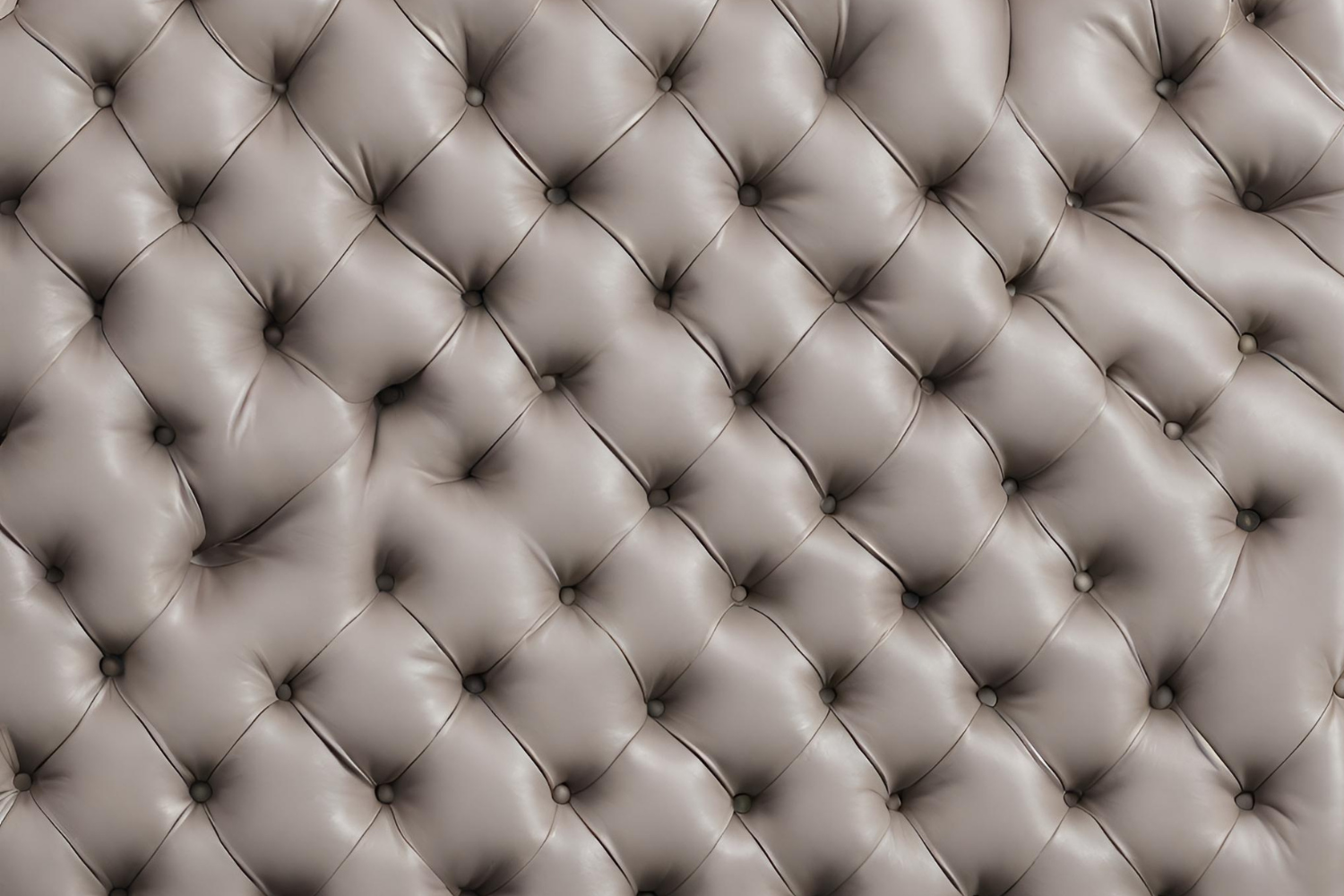
Care and Maintenance of Synthetic Leather
Proper care and maintenance are essential for preserving the appearance and longevity of synthetic leather products, ensuring they remain in pristine condition for years to come.
1. Cleaning
To clean, regularly wipe synthetic leather products with a damp cloth to remove surface dirt and grime. Avoid using harsh chemicals or abrasive cleaners, as they can damage the material.
2. Conditioning
Apply a small amount of synthetic leather conditioner to the surface of the product and gently massage it in with a soft cloth. This helps restore moisture and flexibility to the material, keeping it supple and preventing cracking.
3. Avoiding Heat and Sunlight
Keep synthetic leather products away from direct heat sources and prolonged sunlight exposure, as this can cause the material to dry out and become brittle over time. Store them in a cool, dry place when not in use.
4. Preventing Stains
To prevent stains, promptly blot spills with a clean cloth and avoid rubbing, which can spread the stain further. For stubborn stains, use a mild soap solution and gently dab the affected area until the stain lifts.
5. Waterproofing
Consider applying a waterproofing spray specifically designed for synthetic leather products to provide an extra layer of protection against moisture and stains. Be sure to test the spray on a small, inconspicuous area first to ensure compatibility.
6. Storage
When not in use, store synthetic leather products in a breathable dust bag or fabric pouch to protect them from dust and scratches. Avoid storing them in plastic bags or airtight containers, as this can trap moisture and promote mold growth.
7. Regular Inspection
Periodically inspect synthetic leather products for signs of wear and tear, such as cracking, peeling, or discoloration. Address any issues promptly to prevent further damage and prolong the lifespan of the product.
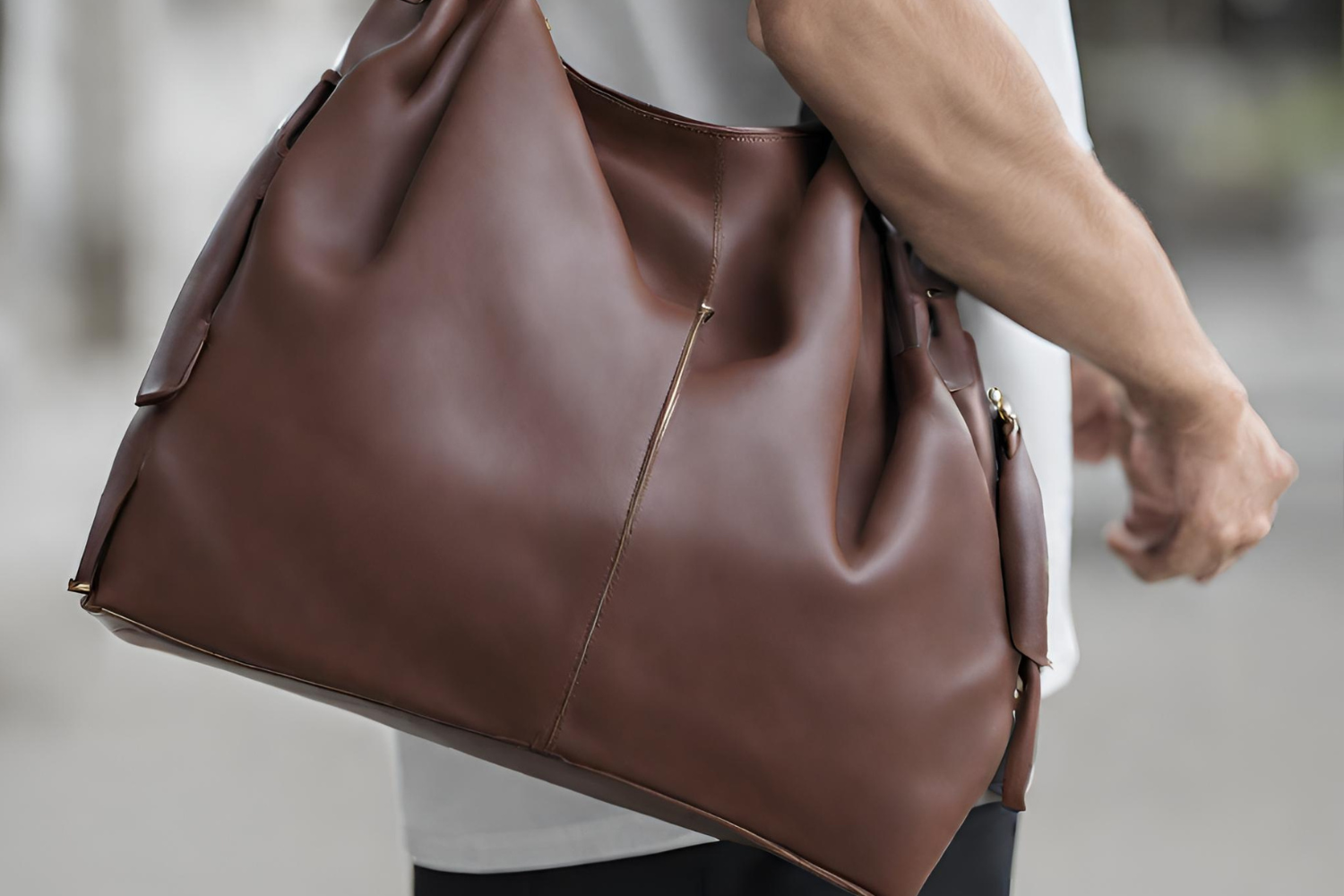
FAQs
Here are some commonly asked questions about synthetic leather, answered for your convenience.
1. Is synthetic leather as durable as real leather?
Synthetic leather can be durable, but it will not match the longevity of quality real leathers like full grain and top grain leather. Due to the properties of real leather and the tanning process, faux leather just cannot be as durable as the real thing.
It may be more durable than low grades that use a small amount of real leather fabric like bonded leather.
However, with proper care, high-quality synthetic leather products can last for many years.
2. Is synthetic leather waterproof?
Synthetic leather is often water-resistant but may not be completely waterproof.
It can withstand light moisture, but prolonged exposure to water may cause damage.
Applying a waterproofing spray can enhance its water resistance.
3. Is synthetic leather eco-friendly?
Synthetic leather can be more eco-friendly than genuine leather, as it does not require animal farming and may utilize recycled materials.
However, the production of synthetic materials still has environmental impacts and uses fossil fuels, so it's essential to choose responsibly produced options.
4. How do I clean synthetic leather?
Cleaning synthetic leather is simple—just wipe it with a damp cloth to remove dirt and grime.
Avoid harsh chemicals and abrasive cleaners, as they can damage the material.
Conditioning with a synthetic leather conditioner can help maintain its appearance and flexibility.
5. Can synthetic leather be recycled?
Many synthetic leather products are recyclable, but recycling options may vary depending on the materials used.
Check with your local recycling facility to see if they accept synthetic leather products for recycling.
6. Is synthetic leather breathable?
Synthetic leather is not be as breathable as genuine leather, but modern production methods often incorporate features to enhance breathability, such as perforations or breathable linings.
7. Is synthetic leather suitable for people with allergies?
Synthetic leather is generally hypoallergenic and suitable for people with allergies to animal products.
However, some individuals may be sensitive to certain chemicals used in synthetic materials, so it's essential to test for any adverse reactions before prolonged use.
8. What are the other names for synthetic leather?
Synthetic leather is often known by other names. These include: faux leather, vegan leather, leatherette, polyurethane leather, pleather and imitation leather.
All these terms mean the same thing: they are made from man made processes, not from real animal hides.
